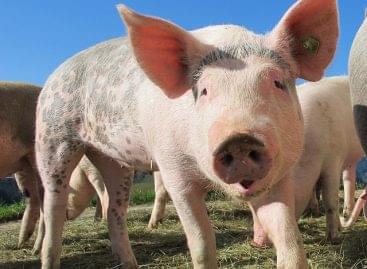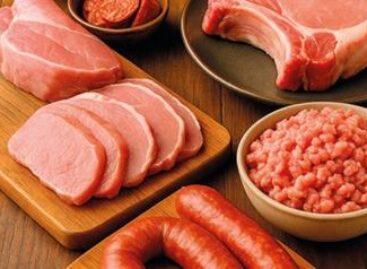Animal Processing in 2024: Increasing Pork and Poultry Slaughter, Decreasing Cattle and Sheep Processing
In the first three quarters of 2024, animal processing data in Hungarian slaughterhouses showed mixed results. While pig and poultry slaughterings showed a significant increase, cattle and sheep processing declined, according to the latest report of the Institute of Agricultural Economics (AKI) – Agrárszektor points out.
Pork: Stable growth
Pork meat processing increased by 6.9% compared to the same period of the previous year. A total of 3.5 million pigs were slaughtered, which is 229 thousand more than in 2023. The live weight of the animals amounted to 412 thousand tons and the carcass weight was 332 thousand tons. The slaughter of sows also increased, from 42 thousand to 45 thousand, which is an increase of 7.6%. Demand for Hungarian pork increased on export markets, while the volume of imports remained unchanged. The domestic pig population reached 2.75 million heads on June 1, an increase of 7.8% compared to the previous year.
Poultry: Record duck slaughter
Poultry processing showed an increase of 8.8%, with a total of 180 million poultry slaughtered, of which 82% were chickens. The number of chickens increased to 147.6 million heads, while duck processing achieved a remarkable increase of 44%, reaching a total of 24.2 million heads. In contrast, goose processing decreased by 14.8%, with only 2.2 million heads processed. Poultry meat production amounted to 411.5 thousand tons in cleaned, broken-up weight. However, poultry exports were restricted in many countries due to avian influenza, which posed challenges for the sector.
Cattle and sheep: Downward trends
Cattle processing fell by 7.5% to 61,500 head, with a live weight of 31,000 tonnes. Sheep processing also fell: 33,200 sheep were slaughtered, a decline of more than 6%. Ewe slaughter amounted to 5,300. At the same time, demand for lamb increased on export markets, especially in Italy, Germany and the Middle East.
Challenges and opportunities
Recent waves of avian influenza have had a significant impact on the Hungarian poultry industry, with more than 150 outbreaks recorded in the autumn of 2024. The entire population of affected farms has been culled and strict protection zones have been established. The virus has led to several countries restricting imports of Hungarian poultry products, further worsening the situation in the sector.
For livestock farming, expanding export markets, preventing epidemics and stimulating domestic consumption are key. The growth of the pig and poultry sectors is promising, but the decline in cattle and sheep processing warns that further development and support are needed in these sectors.
Related news
Turning point in the dairy sector
🎧 Hallgasd a cikket: Lejátszás Szünet Folytatás Leállítás Nyelv: Auto…
Read more >K&H: significant price drop in the pork market
🎧 Hallgasd a cikket: Lejátszás Szünet Folytatás Leállítás Nyelv: Auto…
Read more >Domestic meat industry in a market turmoil
🎧 Hallgasd a cikket: Lejátszás Szünet Folytatás Leállítás Nyelv: Auto…
Read more >Related news
CDs and DVDs are experiencing a renaissance at Vatera, but second-hand LEGO is the real star of this Christmas
🎧 Hallgasd a cikket: Lejátszás Szünet Folytatás Leállítás Nyelv: Auto…
Read more >Christmas tree shopping is also going digital: demand for online ordering is growing rapidly
🎧 Hallgasd a cikket: Lejátszás Szünet Folytatás Leállítás Nyelv: Auto…
Read more >NGM and VOSZ cooperation agreement for the security of digital commerce
🎧 Hallgasd a cikket: Lejátszás Szünet Folytatás Leállítás Nyelv: Auto…
Read more >






